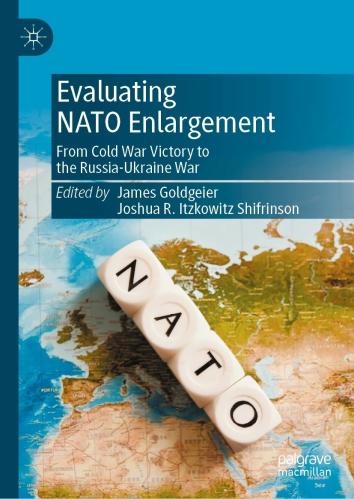On April 3, the Polish government confirmed that it had delivered MiG-29 fighters to Ukraine, just 11 days after the first Slovakian MiG-29s arrived in that beleaguered country. Kremlin spokesperson Dmitry Peskov criticized the provision of the aircraft and suggested they would be destroyed, but he voiced no threat of escalation. Likewise, the arrival of the first German Leopard and British Challenger tanks in Ukraine in late March drew a relatively mild reaction from the Kremlin.
The Kremlin’s red lines — never clearly articulated — appear less stringent than some in the West evidently believe. There remains space for expanded U.S. and Western military assistance to Kyiv that would not cross the lines that appear to have emerged over the past year.
Since the beginning of Russia’s massive invasion of Ukraine 13 months ago, Biden administration officials have voiced two primary goals for U.S. policy regarding the war: first, help Ukraine prevail and defeat Russia militarily; and second, avoid a direct military clash between NATO and Russia. These are the right goals. However, in balancing the two, the administration has taken an unnecessarily cautious approach.
President Joe Biden reiterated his support for Ukraine in a February 21 speech in Warsaw, the day after he had made a quick visit to Kyiv. The degree of U.S. and Western support has increased as the Ukrainian military demonstrated its ability to stand up to the Russian army. He has also made clear his second goal in another speech on March 11: “We will not fight a war against Russia in Ukraine. Direct confrontation between NATO and Russia is World War III, something we must strive to prevent.”
The trick for Washington and other NATO members providing military aid to Ukraine has been to calculate how far they can go without crossing a red line that would trigger a direct NATO-Russia clash. One factor complicating that calculation: The Kremlin has provided no clear specifics as to what it regards as unacceptable. In the early weeks of the war, tacit rules appeared to have developed between the West and Russia regarding military assistance to Ukraine.
In a February 2023 interview, Russian foreign and security policy expert Alexei Arbatov addressed the question of Moscow’s red lines, which he also qualified as tacit. He described the first as “NATO countries are not directly involved in the conflict, although they supply weapons, and Russia does not strike at NATO countries.”
Biden, NATO Secretary General Jens Stoltenberg, and other NATO leaders have repeatedly said that they would not send U.S. or NATO forces to defend Ukraine. That explains why the idea of a no-fly zone over Ukraine encountered such resistance one year ago. It would have required that NATO pilots be prepared to shoot down Russian aircraft and to attack Russian surface-to-air missile sites, perhaps in Russia itself.
Nothing suggests the West’s position on this has changed, even as the war drags on and the list of Russian war crimes grows. Indeed, Ukraine has not asked for Western troops, just weapons. U.S. and NATO policy remains well short of the first red line described by Arbatov.
His second red line was that “NATO countries do not supply long-range missiles for strikes deep into the territory of the Russian Federation.” This question also does not arise. As Ukrainian Defense Minister Oleksii Reznikov said on February 5, “We always emphasize to our Western partners that we will not use Western weapons [to launch strikes] on the territory of the Russian Federation.”
It is an absurd war in which the Russian military can hit targets, military or civilian, throughout Ukraine while seeking to somehow bar Ukraine from striking targets in Russia. However, Kyiv has indicated that it will play by those rules, at least when it uses Western-provided weapons. The Ukrainians would like to get the 200-mile range Army Tactical Missile System, known as ATACMS, which would allow them to strike Russian targets anywhere in occupied Ukraine.
The Ukrainian military has had the High Mobility Artillery Rocket Systems, known as HIMARS, since last June and resisted the temptation to launch its 50-mile-range rockets against targets in Russia. The missiles reportedly were modified so they cannot target sites inside Russia. Was that necessary? Ukrainian leaders are too smart to do something that would endanger the continuing supply of needed U.S. arms.
Arbatov’s red lines sound right and seem consistent with Kremlin reactions to date. The lack of a harsher response to the West’s provision of arms suggests his assessment is on the mark.
The United States and other partners of Ukraine thus can provide more arms while not crossing these red lines: additional tanks and infantry fighting vehicles for counteroffensives to drive back the occupying Russian army; the ATACMS missile, limited to use against targets in occupied Ukraine; and even fighter aircraft, which Ukraine could use for air defense and close air support of its counteroffensives without flying against targets in Russia. Giving Ukraine the capabilities to break out of a debilitating war of attrition and engage in maneuver warfare would provide Kyiv the chance to prevail on the battlefield. That offers the best way to foreshorten the war.
To be sure, Moscow will not like this. But if the Kremlin has solid red lines, they appear to focus on effects, e.g., do they lead to strikes on Russian territory? As for the weapons themselves, Russian officials grumble but do not make extravagant threats. In any case, to the extent that the Russians react militarily, that reaction, as it has over the past year, would focus on Ukraine.
The Ukrainians have repeatedly made clear they will accept that risk; they want the weapons. The West should provide them.
The Brookings Institution is committed to quality, independence, and impact.
We are supported by a diverse array of funders. In line with our values and policies, each Brookings publication represents the sole views of its author(s).











Commentary
Arming Ukraine without crossing Russia’s red lines
April 6, 2023